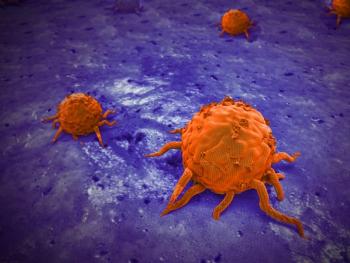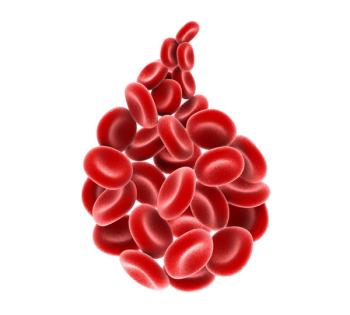
Investigators Report Efficacy Trends With PHE885 in R/R Multiple Myeloma
A phase 1 trial continued to show positive responses when PHE885 was used in patients with relapsed/refractory multiple myeloma.
Increased objective response rates (ORR), high minimal residual (MRD) negativity rates, and no new safety signals were observed when PHE885 was utilized in patients with relapsed/refractory multiple myeloma, according to results from a phase 1 trial (NCT04318327) presented at the
The CAR product was created using the T-Charge process, which led to significantly shortened production time. This is an important development because prolonged manufacturing time may limit patient access, especially in aggressive disease, according to Adam S. Sperling, MD, PhD, et al.
“Despite the approval of 2 CAR T products, there is a need for improved production with faster and more reliable manufacturing to generate products that provide prolonged clinical benefit for patients,” lead author Sperling, associate director of basic and correlative science, multiple myeloma, and cell therapies at the Dana-Farber Cancer Institute in Boston, Massachusetts.
Sperling presented updated data after a median follow-up of 6.7 months at the data cutoff of March 28, 2023. Investigators reported that the ORR was 100% at the active doses of 10 × 106 and 20 × 106. For all patients (N = 49), the ORR was 98% and a very good partial response of 80%.
PHE885 is an autologous, fully human, B-cell maturation antigen (BCMA)-directed CAR T-cell therapy. Overall, the advantages of the T-Charge process can result in a 2 day manufacturing time, preserve T-cell stemness, and enhance in vivo expansion. This can lead to a door-to-door time from leukapheresis to infusion of less than 10 days, according to Sperling.
“Because the cells spend a limited time ex vivo, the process preserves T-cell stemness, which we hope will enhance in vivo expansion, persistence, and T-cell function,” Sperling said.
When investigators analyzed PHE855 by flow cytometry in 41 patients, comparing apheresis and final product pairs, they noted no significant differences in percentage of central memory, effector memory, and T-cell subsets. In particular, there was a trend toward enriched CD4 central memory T-cells in the final product. This demonstrates a greater potential for in vivo expansion with longer persistence and improved function, said Sperling.
Patient median age was 65 years (range, 45-81) and 33% had extramedullary disease. Patients had undergone a median of 4 lines of prior therapy with 94% being triple refractory and 62% being penta refractory. Thirty-four percent of patients had received bridging therapy.
The CAR agent was administered at multiple dose levels ranging from 2.5 to 20 million cells on day 1 and following infusion, there was remarkable in vivo expansion with prolonged persistence of the agent. Investigators plotted the absolute lymphocyte count for patients with early time points demonstrating low lymphocyte counts, which likely reflected the recent exposure to lymphodepleting chemotherapy, said Sperling. With CAR T expansion, lymphocyte count increased, of which almost all were CD3-positive CAR-positive cells. “In some patients, we saw a dramatic expansion with white blood cell counts reaching 20,000 or greater and with almost all cells showing CD3-positive T cells,” Sperling said.
Simultaneous with expansion, investigators also reported high response rates, with all but 1 patient responding to treatment. This patient was treated with the lowest dose of 2.5 million cells. Sperling noted that at the time to receive lymphodepleting chemotherapy, the patient had progressed, with 20% of their white cells being plasma cells.
“I think a patient with this type of aggressive disease would probably not have made it to cell infusion [if they were given] a standard CAR product that had a 6 to 8 week manufacturing turnaround time,” Sperling said.
Investigators reported early responses, with a median time to first response of 0.95 months and a median time to best response of 2.76 months. At 3 months, patients who received the 20 × 106 dose exhibited an 80% response (n = 4/5) and at 6 months, the response was 100% (n = 3/3). At 3 months, patients who received the 10 × 106 dose had a 54% response (n = 7/13) and at 6 months, a 71% response (n = 5/7). Complete responses and stringent complete responses were observed as late as 18 months post-infusion.
The safety profile of PHE855 is similar to that seen in other CAR T-cell studies. Cytokine release syndrome (CRS) was common and was observed in all but 2 patients, but most cases were limited to grade 1 or grade 2. Time of onset for CRS was 8 days. Interventions administered to alleviate CRS, such as tocilizumab (Actemra), corticosteroids, and anakinra (Kineret), were common.
Neurotoxicity of any grade was seen in only 20% of patients, with most cases being grade 1 or 2. All occurred concurrently with CRS and resolved with treatment. There were no cases of delayed neurotoxicity or Parkinsonian-like features observed.
Other adverse events were similar to that seen in other CAR T-cell studies; the most common hematologic toxicities were elevations in aspartate aminotransferase, alanine transaminase, and amylase levels.
Dose-limiting toxicities were observed across all dose levels and in 33% of patients who received the highest dose of 20 × 106. At this dosage, neutropenia (grade 4), ejection fraction decrease (grade 3), atrial fibrillation (grade 3), and neurotoxicity (grade 3) were observed. Investigators reported that 13 patients died due to progressive disease, 1 patient died due to hemorrhagic shock that was determined to be unrelated to PHE855, and 1 patient died due to a lung infection attributed to the study drug.
“A phase 2 study of PHE855 is currently underway in patients with relapsed and refractory multiple myeloma and evaluation in earlier lines of therapy is set to begin,” concluded Sperling.
Reference
Sperling AS, Derman BA, Nikiforow S, et al. Updated phase I study results of PHE885, a T-Charge manufactured BCMA-directed CAR-T cell therapy, for patients (pts) with r/r multiple myeloma (RRMM). J Clin Oncol. 2023;41(suppl 16):8004. doi: 10.1200/JCO.2023.41.16_suppl.8004
Newsletter
Stay up to date on recent advances in the multidisciplinary approach to cancer.


















































































